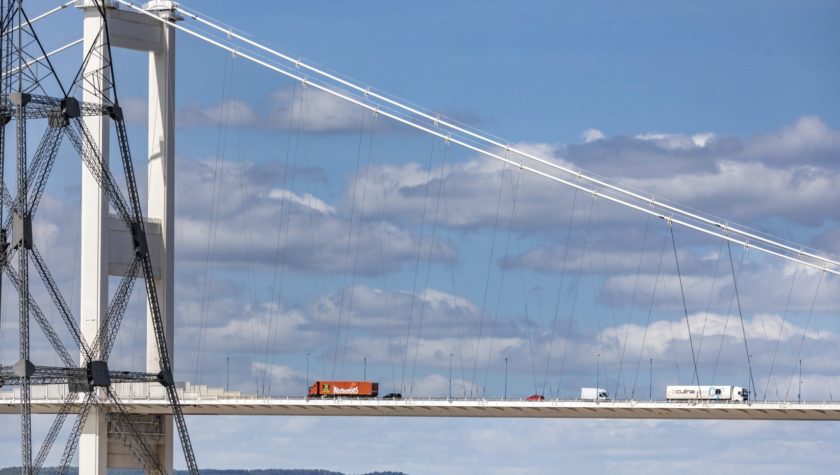The National Infrastructure Assessment
 Sir John Armitt CBE said:
Sir John Armitt CBE said:
“Whether it’s electric or driverless cars, new energy sources, tackling the risk of climate change or preparing for the newest and fastest broadband speeds, the issues we’ve been considering profoundly affect people’s everyday lives.
“The whole purpose of the UK’s first-ever National Infrastructure Assessment is to think beyond the technologies of today and to ensure we can make the most of future innovations. It’s why it’s not just a one-off but something we will be repeating every five years to ensure we remain on the front foot.
“This is not some unaffordable wish-list of projects: it sets a clear direction for how to meet the country’s future infrastructure needs, and makes a realistic assessment of what can and should be delivered within the stated aim of Ministers for steady and continued investment over the coming years.
“I therefore look forward to the Government’s response to our report, and seeing how our recommendations can become reality.”
Building a digital society
 Andy Green said:
Andy Green said:
“From businesses who need reliable high speed bandwidth to manage their global supply chains in real time, or families streaming the latest film releases via smart TVs, we are all looking for fast, reliable broadband connections – and so are our international competitors.
“We can’t afford for any community to be cut off from these essential technologies and so alongside private companies, the Government must also play a role.
“A National Broadband Plan would make clear that the government needs to take action to ensure rural areas as well as our cities can take full advantage of the digital revolution.”
Low cost, low carbon

Professor David Fisk CB said:
“Falls in the prices of renewable technologies have made them increasingly viable as one of this country’s main sources of electrical power.
“nuclear power stations will not be coming onstream before the 2030s– so we need to continue encouraging development of wind and solar energy sources to meet our legally binding climate change targets.
“By investing now in built infrastructure, and finding the best low-carbon sources for heating our homes and businesses, costs will be kept down, helped by savings from the switch to low carbon electric vehicles..
Revolutionising road transport:
 Professor Sir Tim Besley CBE said:
Professor Sir Tim Besley CBE said:
“With manufacturers investing billions in developing electric cars, over time these vehicles will become more affordable and attractive to drivers – we need to give them every reason to abandon the internal combustion engine and trust this new technology.
“A nationwide network of charging points is essential to achieving this and if we do it right the UK could reap the benefits of quieter, greener cars, and a more efficiently-run and managed energy system keeping them on the road.
“There are already clear signs that private companies are willing to invest in installing charging points, and it’s now for Whitehall, Town Halls and others to help make that happen.”
Transport and housing for thriving city regions
 Bridget Rosewell OBE said:
Bridget Rosewell OBE said:
“Important projects like HS2 and Northern Powerhouse Rail will provide vital links between our great cities, and the opening of Crossrail – and support for Crossrail 2 – will make it easier to travel across the Capital.
“Next we must improve travel within other cities across the country, with Metro Mayors and city leaders at the forefront of this work. Their long-term strategies must cover transport, employment and housing, supporting economic growth for the future and creating vibrant communities.
“To make the most of this, we want Government to legislate to give major cities stable five-year budgets, giving them the certainty they need to plan ahead and invest.”
Reducing the risks of drought and flooding
 Dame Kate Barker DBE said:
Dame Kate Barker DBE said:
“Communities up and down the country have suffered the disruption and distress that flooding causes – moving out from their homes, the months of repair work and the constant worry that it could happen all over again.
“Our National Infrastructure Assessment makes clear the need for a nationwide flood resilience standard by 2050, which will require significant investment over the coming decades.
“Ten years on from the Pitt Review, we still need to do more to give households and businesses the confidence that their communities are being protected – our recommendation sets out the actions we should take.”
Choosing and designing infrastructure
 Professor Sadie Morgan said:
Professor Sadie Morgan said:
“Design is about more than just the aesthetics – it’s about ensuring that infrastructure works for its users, for its surrounding environment and for those who live or work nearby.
“Having each major project subject to design review – including through a dedicated design panel – can help achieve this, considering the needs of the end user and the wider impact of that infrastructure both locally and nationally.
“I’ve seen for myself the difference good quality design can make to the success of a project, which is why I want to see this practice embedded as the standard for the delivery of all major infrastructure.”
Funding and financing
 Julia Prescot said:
Julia Prescot said:
“The National Infrastructure Assessment gives government the insight and evidence it needs to meet this country’s needs in the long-term – to ensure projects are delivered, we also need to build confidence that the funding and finance will be in place.
“While Ministers have committed to investing in our infrastructure, we must also look to secure new and innovative ways of funding and financing projects both within the public sector but also from private investors.
“The steps we’re recommending are designed with precisely this objective in mind, enabling us to make the improvements and innovations we want to over the coming decades.”




